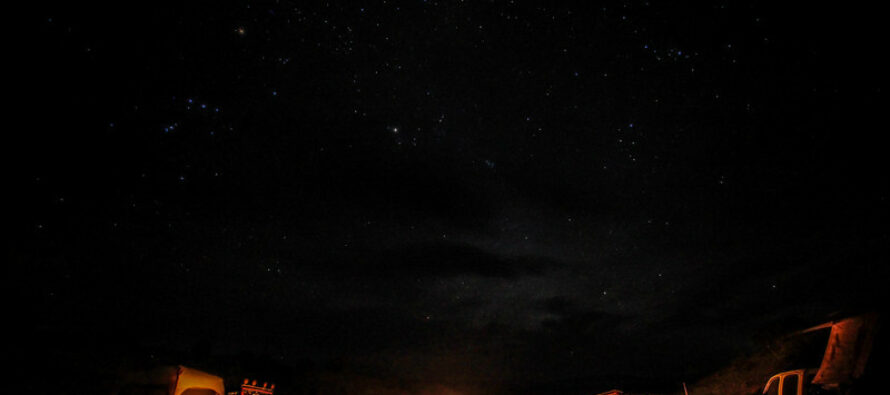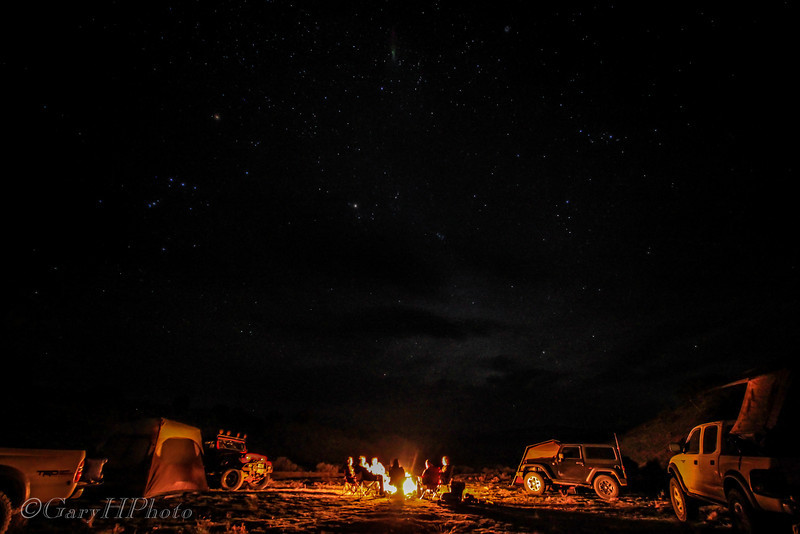How To Set Up Camp At Night

How to Set up Camp at Night
Camping at night can be fun for all ages. It allows the campers time to do fun activities such as telling stories, night walking, and stargazing.
There are several factors that determine how great your nighttime camping experience is. With the proper preparation, you can have an enjoyable experience for you and the rest of your group.
Factors to consider when camping at night:
1. Choosing a Camp Site
The choice of a camp site should be a smart one. Choosing a perfect location for a camp involves finding an area where sleeping, cooking, eating, and storage is not a problem. Generally, a good camp site is flat, but with good drainage. Keep a flashlight handy to choose a good area. You can read more about that here.
Make sure the camp site is away from natural travel corridors such as wildlife trails, the edge of the forest, river banks, or lake shores. You should pick an area that is preferably quiet. This allows you to hear sounds from animals, or any other activity happening around you. Avoid camp sites under trees, if possible, because twigs can damage your tent.
When preparing an area for camping, it’s good to aim at causing the least possible impact on the land. If you can find a campsite that has already been made, it is better than making a new one. Also, remember to clean up everything that you brought to the site after your camping trip is over.
2. Setting up the Tent
The first step when setting up a tent is clearing the area to remove debris such as branches, twigs and rocks. A footprint can also be placed on the ground before setting the tent. The footprint helps to protect the tent from damage by debris.
Make sure you follow the installation instructions. For example, pitch your tent into the wind to make sure that mosquitoes that have congregated on the sides of the tent are blown away.
3. Fire and Cooking Area
Often, fire is required when camping. It could be used to cook food or warm yourself during a cold night. Most camping sites have a fire ring or pit. If there is no fire ring around your desired area, set up one at least 15 feet from your tent and surrounding nature.
It’s advisable to prepare the fire on gravel, sand, or raw earth. Alternatively, the spot should be damp. Clear a 10-feet diameter around the fire ring. Today, campers have many sources of fire to choose from. Some use gas stoves while others use cooking stations specifically designed for camping.
4. Food Storage Area
Good food storage enables campers to protect their food from critters. It also keeps the food longer without spoilage. You should be aware that certain animals such as bears can smell food from far and get attracted to your site. A visit from a bear is the last thing you would want while camping.
One of the most thoughtful things to do about food storage is carrying non-perishables to the camp. In the case of perishable food, carry a cooler and plenty of ice for your convenience. Experts advise that the food and supplies storage area should be at least 100 yards from the sleeping area.
Camp Care Tips
Having knowledge about caring for tents helps the camper when setting up the tent and also when camping. Below are some of the camp care tips:
– Condensation: When a person is inside the tent, his/her breathe causes temperature difference between the interior and exterior environments of the tent. The temperature difference can cause condensation inside the tent.
To avoid condensation, leave the rain fly and/or windows open to allow hot air escape from the inside of the tent.
– Seam sealing: Some tents do not have factory seam tape and the small holes on the tent can leak water inside. This water can damage some of the items stored in the tent and make for an uncomfortable experience. The product package may contain seam sealing guidelines. You can use sealers such as McNett Outdoor SeamGrip to seam seal your tent.
– Sticky zipper: Sometimes tent zippers stick due to continued use in sandy environments. If that’s the case with your zipper, do not force it as it can easily cause the slider to erode. Carry with you some oil to apply on sticky zippers for proper functioning.
– Tent cleaning: Any loose debris should be swept out of the tent and put in a plastic bag awaiting proper disposal. The tent should then be flushed with water and left to dry. Tent poles should be cleaned with a soft dry cloth to remove soil or salt (if camping in the oceanside). This helps to avoid corrosion of the poles.
Visit: EZ Battery Reconditioning To Learn More here: http://www.survivalistdaily.com/ezbatteryreconditioning








Let me tell You a sad story ! There are no comments yet, but You can be first one to comment this article.
Write a comment